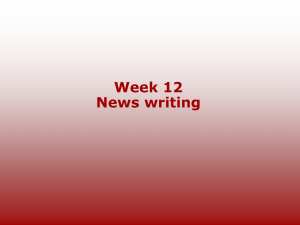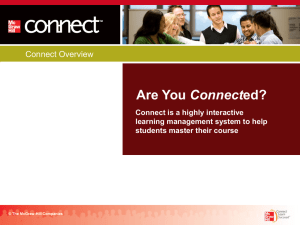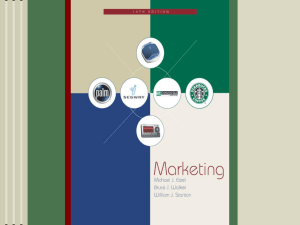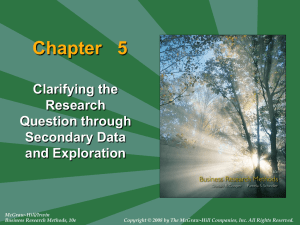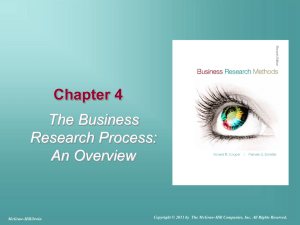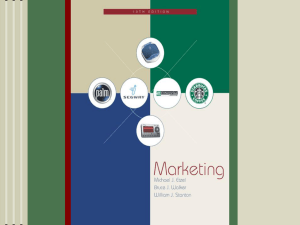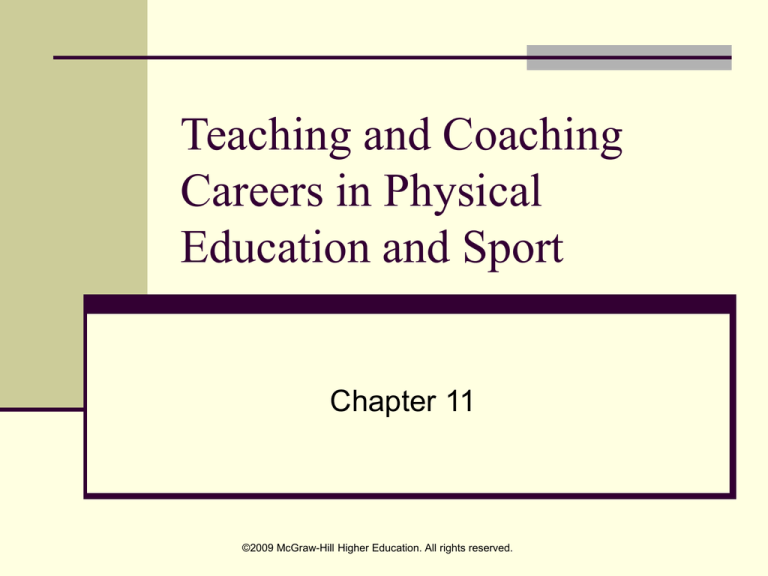
Teaching and Coaching
Careers in Physical
Education and Sport
Chapter 11
©2009 McGraw-Hill Higher Education. All rights reserved.
Teaching and Coaching Careers
What are the advantages and disadvantages
of pursuing a teaching career?
What are the similarities and differences
between teaching and coaching?
What is the effect of burnout on teachers and
coaches?
©2009 McGraw-Hill Higher Education. All rights reserved.
Teaching Careers
School and non-school settings
Have high expectations for all students.
Keep students involved in relevant activities.
Create and atmosphere that promotes learning.
What are some of the reasons that people go into
the teaching profession?
What are your reasons for entering the teaching
profession?
©2009 McGraw-Hill Higher Education. All rights reserved.
Benefits and Drawbacks of
Teaching – School Setting
BENEFITS:
DRAWBACKS:
Salary
Teach diverse
activities
Offers job tenure
Intrinsic rewards
Opportunity to coach
Lack of financial
support
Inadequate facilities
Discipline problems
Overpopulated classes
Non-subject related
duties (lunch duty, etc.)
©2009 McGraw-Hill Higher Education. All rights reserved.
Benefits and Drawbacks of
Teaching – Nonschool Setting
BENEFITS:
DISADVANTAGES:
Clients are voluntary
Opportunity to
specialize in an area
Variety of settings
Lack job security
Various work hours
Salary could b e
dependent on
number of clients
©2009 McGraw-Hill Higher Education. All rights reserved.
Beginning and Average Teacher Salaries
60000
56516
50000
46597
40027
Dollar
40000
37123
31704
30000
23952
20000
10000
0
Average
Highest
Salary
Beginning Teacher
Average Teacher
Lowest
High Quality Programs (NASPE)
Help students develop health-related fitness, physical
competence, and cognitive understanding of the
many different facets of physical activity.
Focus on meeting the developmental needs of
students and developing the skills, knowledge, and
attitudes essential to adopting a healthy and
physically active lifestyle
Essential features
opportunity to learn
incorporation of meaningful content
appropriate instruction.
©2009 McGraw-Hill Higher Education. All rights reserved.
Qualities of Effective Teachers
Organizational skills
Communication skills
Instructional skills
Motivational skills
Human relations skills
©2009 McGraw-Hill Higher Education. All rights reserved.
INTASC Competencies
Content knowledge
Planning
Diverse learners
Assessment strategies
Instructional Strategies
Systematic reflection
Motivation
Professional
Active engagement
development
Learning community
Positive learning
environment
©2009 McGraw-Hill Higher Education. All rights reserved.
NASPE Beginning Teacher Standards
Content knowledge
Planning and Instruction
Growth and
Learner Assessment
development
Diverse learners
Management and
Motivation
Communication
Reflection
Collaboration
Technology
©2009 McGraw-Hill Higher Education. All rights reserved.
Conducting Quality Programs
Opportunity to learn
Qualified, physical education specialists who
can skillfully implement developmentally
appropriate physical education program
Sufficient instruction time
150 minutes/week elementary level
225 minutes/week middle and high school level
Adequate facilities and equipment
©2009 McGraw-Hill Higher Education. All rights reserved.
Conducting Quality Programs
Meaningful content sequenced and organized
Variety of motor skills
Fitness education
Enhancement of learning in three domains
Helps students incorporate regular physical
activity into their lives
©2009 McGraw-Hill Higher Education. All rights reserved.
Conducting Quality Programs
Provision of appropriate instruction
Inclusion of all students in developmentally
appropriate physical activity
Physical activity is valued for it’s contribution
to health and life
Assessment of student learning conducted on
a regular basis
©2009 McGraw-Hill Higher Education. All rights reserved.
Developmentally Appropriate Physical
Activity Experiences
Curriculum
Assessment
Development of
Regular involvement
movement concepts
and fundamental skills
Cognitive development
Affective development
Concepts of fitness
Physical fitness tests
Calisthenics
Fitness
Active participation
Activities
Equity
Success rate
Time
Facilities
Equipment
©2009 McGraw-Hill Higher Education. All rights reserved.
Teaching Responsibilities
Instructional Tasks (related directly to teaching)
Explaining or performing a skill, or strategy, and
evaluating students’ performances.
Managerial Tasks (related to the administration of class)
Taking attendance, dealing with discipline
problems, supervising the locker room, handling
equipment.
Institutional Tasks (related to the setting in which teaching
occurs)
Hall duty, lunch room supervision, attend
curriculum and department meetings, conduct
parent-teacher conferences.
©2009 McGraw-Hill Higher Education. All rights reserved.
Teaching Careers
School Setting
PreK-12 (public or
private)
Higher education
Basic instruction
Professional
Preparation
Adapted physical
education
Non-school Setting
Clubs
Community
organizations
Centers for the
elderly
Resorts
Military
©2009 McGraw-Hill Higher Education. All rights reserved.
Teaching Certification
Each state has minimum requirements that prospective
teachers must reach before they become legally
certified to teach.
Complete standardized tests
general knowledge
communication skills
professional knowledge
specialty area (physical education or health, etc.)
Public schools require certification, but private and non-
school settings may not.
©2009 McGraw-Hill Higher Education. All rights reserved.
Adapted Physical Education
National Standards
Human development
Instructional design &
Motor behavior
Exercise science
Measurement &
evaluation
History & philosophy
Unique attributes of
learners
Curriculum theory and
development
planning
Teaching
Consultation & staff
development
Student & program
evaluation
Continuing education
Ethics
Communication
www.cortland.edu/APENS/15standards.htm
©2009 McGraw-Hill Higher Education. All rights reserved.
Coaching Responsibilities
Instructional: conducting practice, coaching a
game
Managerial: recording statistics, dealing with
equipment, giving interviews, recruiting
Institutional: teaching or department
duties/meetings
Represent organization
Counseling athletes
Professional development at clinics/conventions
©2009 McGraw-Hill Higher Education. All rights reserved.
Benefits and Drawbacks of Coaching
BENEFITS:
DRAWBACKS:
Intrinsic rewards
Excitement of winning
Respect
Satisfaction of giving
one’s best
Help athletes learn
Long hours
Salaries vary greatly
High turnover rate
Pressure to win
Role conflict
Burnout
©2009 McGraw-Hill Higher Education. All rights reserved.
Securing a Coaching Position
Requires expertise gained through:
Playing experience
Attending clinics and workshops
Being an official in your sport
Taking advantage of certification/licensing programs
May require teaching certificate or master’s degree
May want to develop expertise in a second sport out of
season to increase marketability.
Gain practical experience however possible.
©2009 McGraw-Hill Higher Education. All rights reserved.
NASPE Domains of Coaching
Competency
Philosophy and ethics
Safety and injury prevention
Physical conditioning
Growth and development
Teaching and communication
Sports skills and tactics
Organization and communication
Evaluation
©2009 McGraw-Hill Higher Education. All rights reserved.
Coaching Certification Programs
American Sport Education Program (ASEP)
Training in coaching the young athlete, coaching
principles, sports first aid, drugs and sport, and teaching
sport skills.
National Youth Sport Coaches Association
(NYSCA)
Program for Athletic Coaches Education
(PACE)
©2009 McGraw-Hill Higher Education. All rights reserved.
Burnout
Defined: Overwhelming exhaustion, feelings of cynicism
and detachment from the job, and a sense of
ineffectiveness and lack of accomplishment.
Causes:
Lack of administrative and community support
Lack of input
Inadequate salaries for large teaching loads
Large classes, discipline problems
Absence of opportunities for professional and personal
growth
Teacher-coach role conflict
Professional and personal problem interaction
©2009 McGraw-Hill Higher Education. All rights reserved.
Burnout
Prevention and remediation
Provide meaningful in-service programs
Increased feedback about performance by
administration
Participation in professional organizations
Revitalize oneself on time off with hobbies or nonwork related activities
Maintain good health
©2009 McGraw-Hill Higher Education. All rights reserved.
Increasing Professional Marketability
Build on skills and talents
Need for bilingual educators.
Additional coursework
Adapted physical education
Dual certification
Become certified to teach more than one subject or even
driver education.
Practical experience
Join professional organizations and network.
Demonstrate use of technology
©2009 McGraw-Hill Higher Education. All rights reserved.

